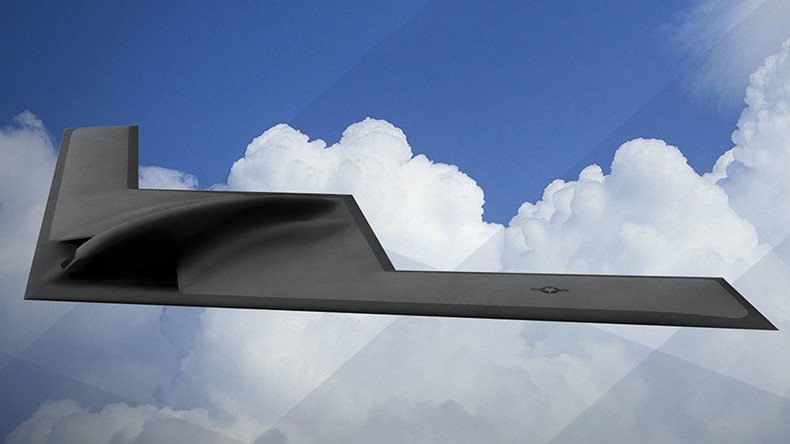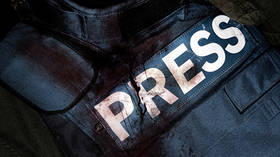Don’t you look familiar? Air Force introduces B-21 bomber

The US Air Force wants to have 100 new long-range stealth bombers by the mid-2020s. The new jet still lacks a name, but has been designated as the B-21. For now, it’s only a gleam in an artist’s eye – and a familiar one, at that.
Air Force Secretary Deborah Lee James unveiled an artistic rendering of the next-generation bomber at the Air Warfare Symposium in Orlando, Florida on Friday. Formerly known as the Long-Range Strike Bomber (LRS-B), the new plane has been designated as the B-21 – the first US bomber for the 21st century. Speaking at the event organized by the Air Force Association, James said the futuristic plane still lacks a name, and offered to crowdsource it from USAF personnel.
“So we have an image, we have a designation, but we don’t yet have a name,” James said, according to Defense News, adding, “I’m calling on every airman today... to give us your best suggestions for a name for the B-21, America’s newest bomber.”
JUST IN from #AWS16: @SecAF23 releases first rendering of #LRSB, the new B-21 pic.twitter.com/85fCCY0TTR
— Air Force Assoc. (@AirForceAssoc) February 26, 2016
The oddly familiar look of the new bomber is no coincidence. It will be built by Northrop Grumman, the same contractor responsible for the B-2 Spirit, the original stealth bomber that entered the US arsenal in 1997. Only 21 Spirits were ever built, however, at a “flyaway cost” of $737 million apiece, before the program was canceled in 2000.
James herself acknowledged the resemblance.
“The B-21 has been designed from the beginning based on a set of requirements that allows the use of existing and mature technology,” James said, referring to Northrop’s pledge to keep the price tag no higher than $550 million apiece in 2010 dollars.
In October of 2015, the USAF awarded Northrop Grumman the $55 billion contract for engineering, manufacturing, and developing the plane, then still known as the LRS-B, to the protests of the Boeing-Lockheed Martin consortium. The Government Accountability Office (GAO) rejected Boeing’s official protest earlier this month. On Friday, the consortium announced that it would not pursue the matter further.
Some in the Air Force community reportedly pushed for a B-3 designation, hoping to follow the pattern established by Rockwell’s B-1 Lancer and the B-2. One senior fellow of the Council of Foreign Relations had a halfway humorous suggestion for the name, hinting at the new bomber’s intended target.
USAF should've called new bomber the B-er shi yi (Mandarin for 21). So nothing’s lost in translation.
— Micah Zenko (@MicahZenko) February 26, 2016
The Air Force maintains that future threats require having a long-range, highly survivable bomber capable of penetrating and operating in what they call an A2/AD (anti-access/area denial) environment, meaning one with advanced air defenses.
READ MORE: Shooting down US ‘stealth’ jets not that hard, expert warns
The B-21 is intended to replace the B-1B and B-52H bombers in both their conventional and nuclear capacities. First introduced in 1955, the B-52 Stratofortress remains the mainstay of the US bomber force. Only 100 of the B-1 Lancers were built between 1986 and the program’s cancellation in 1988.
“The purpose of the long-range strike with a bomber is to be able to hold any target in the planet at risk, not within weeks or months, but in hours,” General Robin Rand, commander of USAF Global Strike Command, told lawmakers last October.












